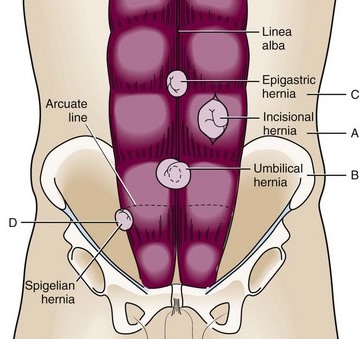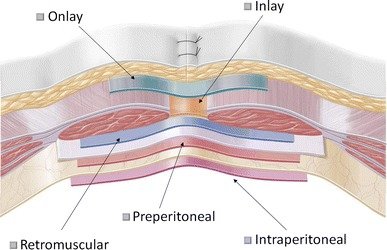Are you facing the ordeal of deciding about Ventral Hernia Surgery? Modern medicine has some fantastic solutions, including laparoscopic and robotic surgeries. Let’s delve into the different types to understand them better.

What is a Ventral Hernia?
Ventral hernia occurs when abdominal tissues push through a weakened area of the front of the abdominal wall, forming a bulge. Repairing these hernias is crucial to prevent complications and relieve symptoms.
Open Ventral Hernia Surgery
In open surgery, a single large cut is made over the hernia in order to repair it with a large mesh. This approach causes more pain, slower recovery and has a higher risk of complications. In modern day surgery, this approach is restricted to very specific types of ventral hernias, and is not advisable for all.
Laparoscopic Ventral Hernia Surgery
Laparoscopic Ventral Hernia Surgery involves small incisions through which a camera and instruments are inserted. This minimally invasive approach allows surgeons to repair the hernia with a mesh while visualizing the target area on a screen.
Robotic Ventral Hernia Surgery
Robotic Ventral Hernia Surgery takes laparoscopy to the next level by using robotic arms which are controlled by the surgeon. This provides enhanced dexterity and precision, due to which hernia surgery becomes more accurate and clean, with minimal tissue trauma.

Onlay Repair
An Onlay Ventral Hernia Repair was the surgery of choice for most patients in the past. Now we reserve this approach only for selected cases, where Laparoscopy or Robotic Surgery is not feasible.
Intra Peritoneal Ventral Hernia Surgery
This is one of the commonest surgeries performed by the Laparoscopic or Robotic approach. The entire surgery is done under magnified vision, allowing the surgeon to visualise every small detail clearly. A composite mesh is placed from within the abdomen in order to repair the hernia. This approach is very beneficial in small hernias, and also in those patients where a quick surgery is needed.
Extra Peritoneal Ventral Hernia Surgery
This is the latest solution to a ventral hernia. Either via Laparoscopy or Robot – Assisted, the surgeon makes small incisions, and stays within the muscular layers of the abdomen (where the hernia defect is actually located). A mesh is placed just behind the abdominal muscles (Retromuscular Mesh) in such a way that it does not come in contact with the intestines at all. Although time consuming, this is the most natural method of repairing a Hernia, giving rise to strong and robust abdominal wall.
Component Separation Surgery (AWR Surgery)
This is a highly specialised approach, which can be performed correctly by an expert Hernia Surgeon. This is useful in cases of large complex hernias, where the muscles have become very weak and need extra strengthening. This a type of Abdominal Wall Reconstruction Surgery, which requires maximum skill and precision, and offers a steady, strong and stable solution.
What is the best approach for me?
Deciding the best approach is no easy task. A frank discussion with a qualified expert Hernia Surgeon will help you arrive at the correct solution.
So don’t hesitate. Contact your Hernia Surgeon today, and choose the right Ventral Hernia Surgery for yourself.
Follow Dr Nidhi Khandelwal, expert Hernia Surgeon on YouTube:
https://www.youtube.com/channel/UCVR7QM3pChurb-KHoqaudcw
https://drnidhikhandelwal.com/wp-content/uploads/2023/07/Hernia-surgery.pdf
